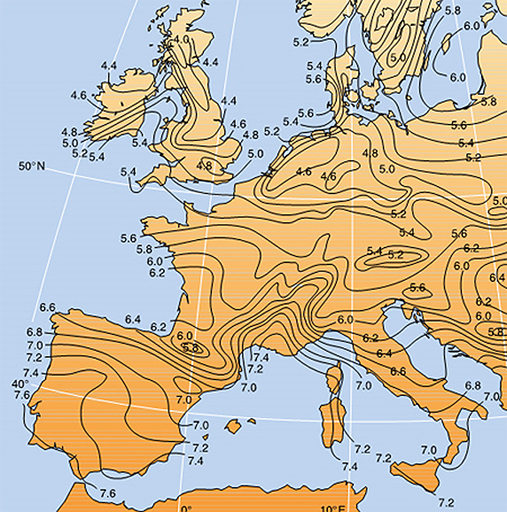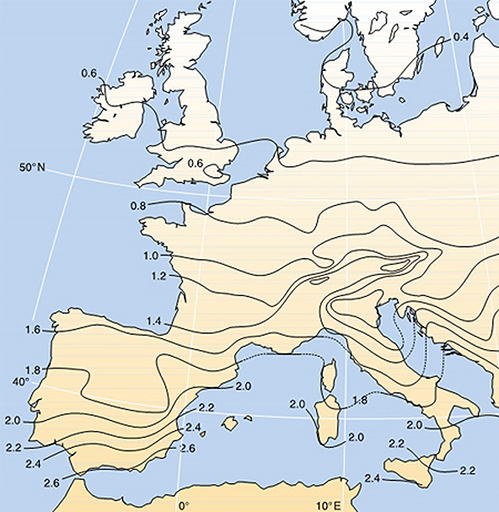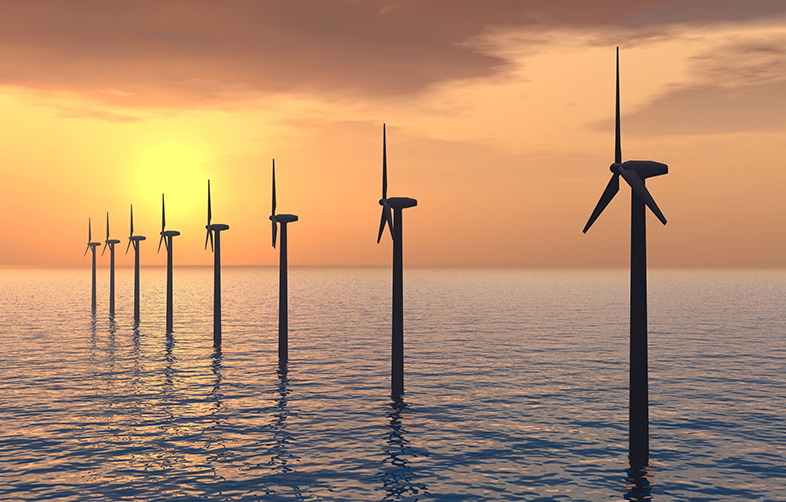2.1 Availability of solar radiation
The annual total solar energy on a horizontal surface is highest near the equator, where it can reach 2000 kilowatt-hours per square metre per year, and even more in some sunny desert areas.
kilowatt-hours per square metre per year = kWh m−2 y−1
Many experimental solar projects, such as the solar thermal power stations described in Section 9, have been built in areas like southern France or Spain, where radiation levels are around 1500 kWh m−2 y−1, or the southern USA, where levels can reach 2500 kWh m−2 y−1. Northern Europe typically only receives about 1000 kWh m−2 y−1

However, these levels vary greatly from summer to winter, as you can see if you study Figure 4 above and Figure 5 below. In July in northern Europe the solar radiation on a horizontal surface is between 4.5 and 5 kWh m−2 per day, but in southern Europe, solar radiation levels are higher – between 6 and 7.5 kWh m−2 per day.
Now have a look at Figure 5, which shows that in winter the levels of solar radiation are far lower. On average in January in northern Europe the radiation level can be only one-tenth of its July value - around 0.5 kWh m−2 per day, but in southern Europe there may still be appreciable amounts available – 1.5 to 2 kWh m−2 per day.

Now let’s look at how we can optimise the collection of solar energy.
